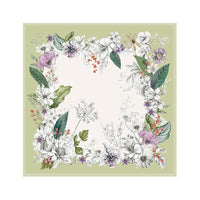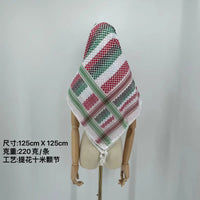The Colourful History of Emirati Men’s Distinctive Headdresses
The United Arab Emirates (UAE) is known for its rich cultural heritage, which is reflected in the traditional attire of Emirati men. Among the most iconic elements of this attire is the distinctive headdress, known as the ghutra or shemagh. These headdresses are not just practical garments for protection against the harsh desert climate but are also symbols of national pride and cultural identity. In this article, we delve into the colourful history of Emirati men’s distinctive headdresses, exploring their origins, variations, and cultural significance.
Understanding the Ghutra and Shemagh
The ghutra, often referred to as a keffiyeh in other Arab nations, is a square or rectangular piece of cloth typically made from cotton. It is worn over the head and held in place by a black cord known as the agal. In the UAE, two primary styles of headdresses are prevalent: the crisp white ghutra and the chequered red variant known as the shemagh. While the white ghutra is favored for its simplicity and elegance, the red and white shemagh is often associated with cooler weather due to its thicker material.
Origins and Historical Significance
The origins of the ghutra can be traced back to the Bedouins, who used it as a practical covering to protect against the sun's heat and sandstorms. Historically, the ghutra has evolved from a simple garment to a symbol of identity. During the British protectorate over Saudi Arabia, military men adopted the ghutra, which contributed to its popularity across the region. Images from the 19th century show the prevalence of the white ghutra, while the emergence of the red and white shemagh occurred in the 1950s in Jordan and Iraq.
Cultural Significance of Emirati Headdresses
Emirati men wear the ghutra not only for its practicality but also as a representation of their national identity. The headdress is a significant part of Islamic dress codes, promoting modesty and adherence to cultural traditions. It distinguishes Emirati men from other civilizations, serving as a connection to their rich heritage and customs.
Variations Across the Region
While the UAE has its distinct style, variations of the ghutra and shemagh can be found across the Gulf Cooperation Council (GCC) countries. In Saudi Arabia, the shemagh is often red and white, while in Oman, a different style known as the mussar is worn. The choice of color and pattern is often influenced by fashion trends rather than social or class distinctions.
Practical Benefits of Wearing a Ghutra
The ghutra serves several practical purposes in the desert environment. Its light color reflects the sun's heat, helping to keep the wearer cool. Additionally, it provides protection against sandstorms and sunburn, covering the face and neck completely. The versatility of the ghutra makes it a vital accessory for Emirati men, whether they are in the city or traversing the desert.
How to Wear a Ghutra
Wearing a ghutra is an art that requires practice to perfect. Here’s a simple step-by-step guide:
- Fold the Cloth: Start by folding the ghutra diagonally to form a triangle.
- Position on Head: Place the folded cloth over your head, with the longer side at the back.
- Twist and Wrap: Take the two ends hanging over your neck, twist them outward, and cross them behind your shoulders.
- Secure and Adjust: Bring the ends back to the front, wrap them around the draped portion, and secure at the back of your head. Adjust for balance and style.

For formal occasions, place the agal over the ghutra to keep it in place.
The Ghutra as a Fashion Statement
While traditionally worn by Emiratis, the ghutra has gained popularity worldwide, often seen as a fashion accessory in Western countries. This trend, however, has sparked discussions on cultural appropriation, as the ghutra is deeply rooted in Middle Eastern identity and history.
Conclusion
The colourful history of Emirati men's distinctive headdresses is a testament to the UAE's rich cultural heritage. From their practical origins to their modern-day significance, the ghutra and shemagh are more than just pieces of cloth—they are symbols of identity, pride, and tradition. As you explore the UAE, take a moment to appreciate the cultural significance of these headdresses and consider incorporating them into your experience for a deeper connection to Emirati culture.
If you’re planning a visit to the UAE, immerse yourself in the local culture by wearing a ghutra and kandura. Experience the unique blend of tradition and modernity that defines Emirati style. Share your journey and insights with others to promote understanding and appreciation of this vibrant culture.






